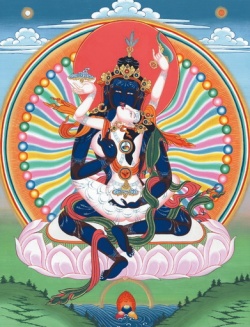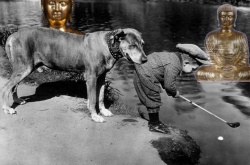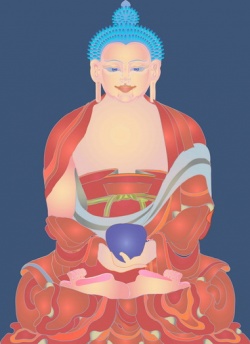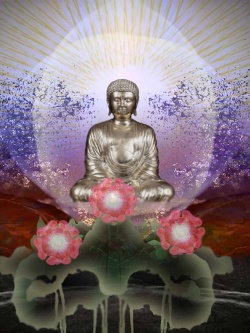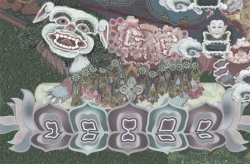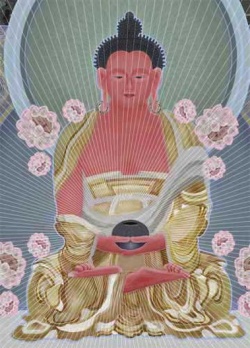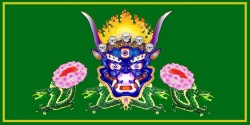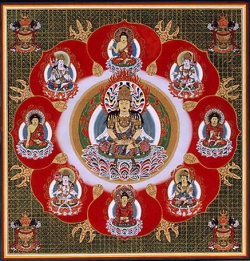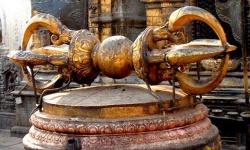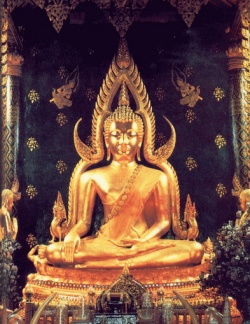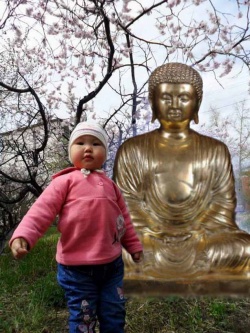Purification rite
Alternative title: cleansing rite
Purification rite , any of the ceremonial acts or customs employed in an attempt to reestablish lost purity or to create a higher degree of purity in relation to the sacred (the transcendental realm) or the social and cultural realm. They are found in all known cultures and religions, both ancient and modern, preliterate and sophisticated, and assume a wide variety of types and forms.
Concepts of purity and pollution
General concepts
Every culture has an idea, in one form or another, that the inner essence of man can be either pure or defiled. This idea presupposes a general view of man in which his active or vitalizing forces, the energies that stimulate and regulate his optimum individual and social functioning, are distinguished from his body, on the one hand, and his mental or spiritual faculties, on the other.
These energies are believed to be disturbed or “polluted” by certain contacts or experiences that have consequences for a person’s entire system, including both the physical and the mental aspects.
Furthermore, the natural elements, animals and plants, the supernatural, and even certain aspects of technology may be viewed as operating on similar energies of their own; they too may therefore be subject to the disturbing effects of pollution.
Because lost purity can be re-established only by ritual and also because purity is often a precondition for the performance of rituals of many kinds, anthropologists refer to this general field of cultural phenomena as “ritual purity” and “ritual pollution.”
The rituals for re-establishing lost purity, or for creating a higher degree of purity, take many different forms in the various contemporary and historical cultures for which information is available.
Some purification rituals involve one or two simple gestures, such as washing the hands or body, changing the clothes, fumigating the person or object with incense, reciting a prayer or an incantation, anointing the person or object with some ritually pure substance. Some involve ordeals, including blood-letting, vomiting, and beating, which have a purgative effect.
Some work on the scapegoat principle, in which the impurities are ritually transferred onto an animal, or even in some cases (as among the ancient Greeks) onto another human being;
the animal or human scapegoat is then run out of town and/or killed, or at least killed symbolically.
Many purification rites are very complex and incorporate several different types of purifying actions.
Ritual purity and pollution are matters of general social concern because pollution, it is believed, may spread from one individual or object to other members of society.
Each culture defines what is pure and impure—and the consequences of purity and pollution—differently from every other culture, although there is considerable cross-cultural overlapping on certain beliefs.
Cultures also vary greatly in the extent to which purity and pollution are pervasive concerns: Hinduism, Judaism, and certain tribal groups such as the Lovedu of South Africa or the Yurok of northern California in the United States seem highly pollution-conscious, whereas among other peoples pollution concerns are relatively isolated and occasional.
Even within the so-called pollution-conscious cultures, attitudes toward the cultural regulations may vary considerably: the Yurok, on the one hand, are said to consider their purification rituals to be rather a nuisance, albeit necessary for the success of their economic endeavours; but Hindus, on the other hand, seem to incorporate and embrace more fully the many regulations and rituals concerning purity prescribed in their belief and social systems.
Pollution is most commonly transmitted by physical contact or proximity, although it may also spread by means of kinship ties or co-residence in an area in which pollution has occurred. Because purity and pollution are inner states (though there usually are outer or observable symptoms of pollution), the defiled man—or artifact, temple, or natural phenomenon—may at first show no outward features of his inner corruption.
Eventually, however, the effects of pollution will make themselves known; the appearance of a symptom or disaster that is culturally defined as a consequence of pollution, for example, may be the first indication that a defiling contact has occurred.
Common cross-cultural, human symptoms of pollution include: skin disease, physical deformity, insanity and feeblemindedness, sterility, and barrenness. Nature also may become barren as a result of pollution; but, on the other hand, the natural elements and magical or supernatural forces may run amok as a result of pollution.
In general, the vital energies of man, nature, or the supernatural, as a consequence of pollution, may become either hypoactive or hyperactive. The vital energies may tend to operate in a manner that leads toward decline, loss of potencies and fertility, and death; they may also, however, tend to operate in an opposite manner that leads toward excess, increase and perversion of potencies, and chaos.
Both of these tendencies presumably contrast with the tendencies of a state of purity, although the properties, symptoms, or consequences of purity rarely are explicitly defined in cultural ideologies, in contrast to the wealth of detail elaborated on the consequences of pollution.
On the whole, purity seems to be equated with whatever a culture considers to be the most advantageous mode of being and functioning for achieving the paramount ideals of that culture.
Thus, throughout most Asian religions (e.g., Hinduism, Buddhism, Jainism, and Taoism), purity is equated with calmness (physical, mental, and emotional equilibrium) in keeping with the ideal goal—at least for religious adepts—of achieving spiritual transcendence or liberation.
In contrast to such Asian religions, groups whose dominant cultural orientation is pragmatic and this-worldly, such as the Yurok, often equate the state of purity with vigour and quickness of mind and body.
Purity and pollution in relation to religious concepts
Concepts of purity and pollution may tend to merge with several concepts of religion: the sacred, sin, and the forces of evil.
Pollution and the sacred
The consequences of contact with both the sacred (the transcendent realm and objects infused with transcendent qualities) and the polluted may be identical, although the reasons for the consequences in the two cases are quite different.
The dangers of contact with the sacred may arise from the belief that the gods are offended by pollution; they will punish a person who defiles a sacred precinct or object (for example, in Buddhism and many other religions, a menstruating woman who enters a temple or shrine).
The gods may even punish an entire village or tribe for such an offense. To come into contact with the sacred is also viewed as dangerous because the sacred is highly powerful or “charged” with energy; thus, one must be properly strengthened (usually by purification) for the encounter.
If one is not thus strengthened, he will be overwhelmed.
Although contact with the sacred may have negative consequences for a person, this is not because the sacred is polluting.
On the other hand, the dangers of encounter with a polluted person (e.g., an “untouchable” in India) or object (e.g., feces, in most cultures) arise directly from the pollution that passes from that person or object to oneself.
Pollution and sin
Purity and pollution beliefs may become incorporated into a religious morality system in which pollution becomes a type of sin and an offense against God or the moral order, and purity becomes a moral or spiritual virtue.
Thus, for example, in the Old Testament, the pollution of birth must not only be cleansed by symbolic or ritual gestures;
it must also be atoned for as a cultic sin that offends the sacred precincts of the Lord. In general, the more universalistic religions—Christianity, Buddhism, and Islām—seem to de-emphasize true pollution concerns, and to subsume them within their frameworks of moral and religious beliefs.
Both the Qurʾān of Islām and the New Testament of Christianity show a sharp decrease in rules of specific pollution avoidances (e.g., fewer food prohibitions) compared to the Old Testament.
Similarly, the sacred texts of Buddhism stress the unimportance of specific avoidances and rituals (in implicit contrast to the multiple and detailed purity regulations of Hinduism) and the necessity for cultivating one’s spiritual and moral development instead.
Pollution and the forces of evil
Ideas of pollution are often closely associated with beliefs in demons, sorcerers, and witches. All of the latter may be viewed, in part, as personifications of the powers of pollution. People in polluted states are believed to be dangerous not only to others because they may spread their pollution, but they themselves are often thought to be in danger of attack by demons, who are attracted by the defiled person’s impurities (see also angel and demon).
Categories and theories of pollution and impurity
Categories of pollution and impurity
Four major categories of what various religions and societies have regarded as polluting or inherently impure phenomena may be distinguished. Virtually any type of impure person, object, or state (as defined in various cultures) may be assigned to one of these four categories, or may be shown to have symbolic associations with one (or sometimes with several) of these four sets.
Physiological processes
The functions of the human body are, for the most part, universally considered polluting, although all functions are not considered polluting in all cultures. The intensity with which the various processes are abhorred also varies from culture to culture.
The list of polluting organic processes and things includes menstruation, sexual intercourse, birth, illness, death, and all bodily excretions and exuviae (urine, feces, saliva, sweat, vomit, blood, menstrual blood, semen, nasal and oral mucous, and hair and nail cuttings).
Associated with this category symbolically may be various persons, animals, natural objects, sense-related objects, and professions: women in general (because they menstruate), pregnant women, prostitutes, and widows (the latter because of their additional association with death); pigs, dogs, and other scavengers because they eat or associate with excrement and garbage; carrion-eating animals because of their association with death; leftover food,
because it has come in contact with saliva via the fingers or utensils that have touched the mouth, or because it may visually resemble vomit or the undigested contents of the stomach; pungent vegetables or spices (such as garlic, onions, and leeks) and strong-smelling meats or fish because they cause foul breath odours;
food in general because of its ultimate state as excrement; certain professions because their members are required to handle corpses or bodily exuviae; and things associated with lowness—the entire body below the navel, the feet, the hem of the garment, the floor or ground—because most bodily excretions derive from the lower part of the body.
Violence and associated processes
A second major category of polluting phenomena involves violence and all associated aspects. This entire category may be reduced to beliefs in the polluting nature of blood and death, but the extensive development of various ideas connected with violence pollution merit its being classified as a separate category.
Violence pollution involves a wide variety of activities: murder, hunting, warfare, physical fights, quarrelling, cursing or speech that is considered foul, aggressive language, lying, and various aggressive human passions (e.g., greed, anger, and hatred).
Various phenomena considered polluting in one culture or another may be placed in this category because of their symbolic associations with violence:
Satan, demons, witches, predatory ghosts, and the practice of black magic; alcohol because it stimulates aggressive impulses; carnivorous, predatory, and aggressive animals;
meat because of the act of slaughtering the animal; certain professions because their members manufacture weapons or kill or fight for a living.
Anomalies
The third major category includes strange, unusual, or unclassifiable phenomena:
(1) certain events of nature (e.g., comets or lunar or solar eclipses);
(2) unusual deaths (e.g., death by lightning);
(3) unusual births (e.g., twins or other multiple births, breech deliveries, miscarriages, or stillbirths);
(4) physical deformities, especially sexual deformities (e.g., monorchids [men possessed of only one testicle], hermaphrodites, or eunuchs);
(5) speech defects and voices appropriate to the opposite sex;
(6) unusual developmental sequences (e.g., children who cut their upper teeth before their lower);
(7) anomalous animals or types of plants that have features of several species;
(8) viscous substances that seem neither solid nor liquid;
(9) persons in liminal (threshold or transitional) categories or states (e.g., persons undergoing initiation rites, strangers, or captives);
(10) persons not considered fully in control of their faculties (e.g., children, drunken persons, the insane, or the mentally or physically handicapped, such as cretins); and
(11) perversions of social relationships, especially sexual, that a culture generally considers to be normal (e.g., adultery, homosexuality, bestiality, incest, births of children to unwed parents or as a result of adulterous relationships, or the breaking of vows of celibacy by monks or nuns).
That pollution results from a confusion of classification rules may explain beliefs that certain objects must not be mixed lest pollution result.
The Old Testament prohibition (also found in certain African groups) that meat and milk should not be mixed with one another or the prohibition in the Vedas (ancient Hindu scriptures) against carrying water and fire at the same time are examples of attempts to maintain classificatory purification rules (see dietary law).
Social classifications: classes and castes
The belief that the lower castes pollute the upper castes has been explicit in India, where a true caste system has existed. These lower castes, to some extent, are considered polluting because they engage in professions that have been or are associated with the physiological processes or with violence.
Many lower caste occupations (e.g., pottery making or basket weaving), however, do not have such associations, and thus the categorization of pollution attached to all lower castes cannot be so explained.
Outside true caste systems, there are de facto systems of racial or ethnic hierarchy, in which certain races or ethnic groups are considered to be inherently lower than others.
In most such systems, the notion that the lower groups pollute the higher is not stated explicitly in terms of pollution; the language of racial or ethnic prejudices in such systems, however, is often strongly reminiscent of pollution concepts—e.g., that the lower groups are “dirty,” have peculiar bodily odours, engage in sexual promiscuity or perversions, are “animals,”
or are violent and dangerous. Relations between the dominant race or ethnic group and the subordinate one often resemble the relations between upper and lower castes in India. In such social systems, eating together and intermarriage generally are not condoned, and segregated neighbourhoods and public facilities to maintain minimal physical contact are encouraged by law or custom.
Theories of pollution and impurity
Though these four major categories indicate the great diversity of phenomena considered polluting cross-culturally, no one culture considers every item noted in these categories as polluting.
Furthermore, within a single culture, not every item considered polluting is necessarily polluting to every member of the society, because the connotation of pollution often is dependent upon the occasion and on the status of a person.
The pollution of death, for example, may be confined to those who have actual contact with the corpse, the immediate family of the deceased, certain categories of kinsmen, or all members of the village in which the death has occurred.
The rules dictating avoidance of certain groups or individuals because of the threat of pollution may be seen as means that a society has at its disposal for emphasizing its important social categories.
Thus, in the case of death, if relatives on the father’s side but not on the mother’s side are considered polluted by the death, it may be theorized that this is one of the society’s ways of emphasizing the greater social significance of the patrilateral relatives in the kinship system.
Sociologists and anthropologists, on the one hand, tend to stress such social implications of pollution rules.
On the other hand, some psychologists, philosophers, and theologians are more interested in explaining what there is about polluting events and processes (e.g., death and menstruation) in themselves that would result in their being considered polluting in so many cultures.
Two general theories have been proposed in relation to these emphases or questions.
The first theory derives primarily from psychoanalytic theories developed by Sigmund Freud in which the quest for sexual, excretory, and aggressive pleasures are viewed as instinctual drives in man that are repressed or greatly limited in the socialization of the individual.
Hence, because many of the phenomena viewed as polluting cross-culturally are related to these concerns, pollution fears are interpreted as projections or symbolizations of these repressed instincts.
The second theory that attempts to explain the specific content of pollution-belief systems (as opposed to the social effects of those beliefs) maintains that, in a very broad sense, things are considered polluting by virtue of their relationship to cultural classification.
This theory holds that everything considered polluting in any culture either is anomalous in relation to basic cultural categories or is positioned at the extremities—i.e., the margins—of major conditions or situations of individual or social existence. Birth and death, for example, are at the margins of an individual’s life, and the lower castes are at the margin of society.
Both of these theories, however, contain certain problems that may be resolved by subsuming them under a more general theory.
The theory derived from psychological considerations is regarded by many scholars as being too narrow in scope because it ignores many types of pollution data; the theory based upon cultural classification, because it is capable of such broad interpretation, loses its coherence as a theory.
A more general view incorporates these two theories within a single more fundamental one based on denial.
Thus, pollution fears might be interpreted as symbolizations of any material that is denied full expression—psychologically, culturally, or socially.
The Freudian theory, emphasizing the psychoanalytic notion of repression of instinctual drives, thus becomes significant in interpreting the first two categories—physiological processes and aggression (i.e., violent emotional processes).
The classification theory, which emphasizes cultural attempts to ignore or suppress phenomena that do not fit its cognitive-classification schemes, then becomes significant in interpreting the third category of polluting things—anomalies, unusual occurrences or types of persons, and “mixings.”
To account for the fourth category, involving the fear of lower castes, classes, and ethnic groups as polluting, the sociopolitical notion of oppression may thus be introduced.
All these concepts—repression, suppression, and oppression—are related to the notion of something or someone being forcibly prevented from expression; that is, of being under some sort of pressure.
This idea suggests why polluting things are viewed as threatening and not simply as interesting peculiarities of the world, because things under pressure are volatile, liable to escape, or capable of erupting at any moment.
Occasions and symbolism of purification rites
Purification rites are required whenever there has been some kind of polluting contact. In addition, cultures may institutionalize regular, periodic purification rituals on the general principle that pollution occurs all the time.
Important changes of status or quests for special or sacred status may be viewed as progressions from lesser to greater states of purity, and such changes or quests thus entail rites that promote the anticipated progressions. Purification is invariably required before any contact with the sacred.
Purification also is generally considered necessary after any kind of traffic with the demonic forces and black magic, because these contacts with the nether realm are viewed as polluting experiences.
Purification rites also may be required before undertaking a major endeavour in order to ensure the participant’s success and a right relationship with the special powers involved in the project.
Though every culture has rituals to rectify unavoidable pollution, prescriptions of avoidance, abstention, separation, and seclusion are utilized to minimize contacts with polluting persons, objects, or places.
Seclusion devices, which confine the very pure or the very polluted within an enclosed area away from other members of society, include menstrual huts, nuptial huts, and birth huts.
Initiates are generally confined to special houses or isolated from the community by living for certain required periods of time in the bush or forest.
Priests often withdraw to the inner rooms of temples to prepare for or to participate in contacts with the sacred; monks and nuns confine themselves or are confined to monasteries in order to remain undefiled by the world, among other reasons.
Seclusion or containment may also be symbolically effected by the use of veils or by the drawing of circles or other enclosures around the object in question.
Under the general heading of segregation, groups of different grades of purity may retire to their respective parts of a town when their periods of contact with other members of their community are completed for the day.
Men may have special houses for their esoteric activities from which women are excluded. Impure persons may be required to cook over a separate fire; persons of different grades of purity often are not permitted to eat together, to sleep under the same roof or in the same room, and, almost universally, to marry or have sexual relations with one another.
Finally, complete abstention, for a fixed period of time, from such polluting activities as sex, eating, and other sensuous indulgences is a significant aspect of purification processes in many societies around the world.
Classification of purification rites
Various kinds of avoidances and abstentions represent the passive aspect of purification. The active aspect consists of the purification rites themselves. Such rites may be classified according to the principle on which they operate.
The removal of pollution
Based on the analogy of cleansing outer dirt or stains by means of bathing or washing in everyday life, purification of man’s inner state of being is almost universally believed to be effected by rituals involving various forms of washing.
The polluted individual might be required to swim or bathe in the sea, a river, a pond, or special tank.
Bathing in swift-flowing streams is often considered especially effective because the rapidly flowing water not only removes the impurities but carries them away.
A polluted person might wash his entire body with water or only certain parts of the body that represent the body or person as a whole—rinsing or cleaning the mouth by other means is common.
Water may be poured, sprinkled, thrown, or blown upon a polluted person or object. Simply touching water is a purifying gesture in the Vedas; gazing at it is considered purificatory in Sri Lanka (Ceylon). In the absence of water various kinds of moist substances may be used—clay, mud, wet herbs, or plants.
The Qurʾān (the Islāmic sacred scriptures) directs desert dwellers and travellers to rub themselves with high clean soil because of the scarcity of water. In cultures in which saliva is not considered polluting, expectorating or breathing on something may be viewed as purificatory gestures.
Other modes of purification based on the analogy of cleansing outer dirt include: the use of wind or aeration to blow or carry away the impurities; sweeping a house or certain area of the ground or brushing the polluted person or object, often with a brush made of fibres from a symbolically pure source; scraping the surface of a polluted object or utensil; shaving and cutting the hair and nails; removing clothing and washing it or destroying it; and putting on clean or new clothes.
The expulsion of pollution
Based on the analogy of expelling internal physical poisoning or corruption, a second category of purification rites involves the actions of expelling, ejecting, purging, or drawing out the pollution from the defiled person or object.
The use of purgatives in purification rites to induce vomiting is not uncommon.
Sweat baths and steam baths are believed to bring the impurities out of the person as symbolized by the emerging sweat. Some purification rites involve bloodletting in order to drain out impurities.
The use of salt in some rites may be based on the fact that salt has drawing or draining properties. In corporate acts of expelling pollution, an entire community may purge itself of a polluted individual in its midst by excommunicating him and forcing him to leave the religious group, caste, tribe, or area.
The transfer of pollution
Closely connected with the practice of drawing pollution from the defiled person or object is the notion that pollution may be transferred from a person or community to another object that is either immune to pollution itself or that can be discarded or destroyed.
The most dramatic rites embodying this principle are scapegoat ceremonies in which pollution is transferred to an animal or person by either touching, bathing with, or simply pronouncing the pollution transferred to the scapegoat.
The scapegoat is then run out of town or killed, actually or symbolically.
The victim may further be made into an offering or sacrifice to the gods on the general ritual principle of keeping the gods satisfied.
In the classic scapegoat ceremony of the Old Testament, as noted in Leviticus, chapter 16, the animal—called Azazel (a desert demon)—was simply released to wander the wilderness; in Bali (in Indonesia) birds act as scapegoats and are then released to fly away.
Less dramatically, pollution may be transferred to a relatively worthless talisman (charm).
Some talismans are regarded as convenient because they are disposable and of little value; after they have served their purposes in specific situations they are thrown away.
In Bali a three-month-old child is purified by transferring his impurities to a chicken; this chicken may then become his pet and continue to absorb the pollutions to which the child is exposed. It may never be killed or eaten, and when it dies it is buried with respect.
The destruction of pollution
Pollution is also believed to be eliminated by destroying the polluted object. The killing of the scapegoat belongs to this general category; more dramatically, a severely polluted person may himself be killed rather than being allowed the opportunity to transfer his impurities onto a more dispensable animal or object.
The execution of a polluted person or a scapegoat animal often takes the form of drowning, choking, suffocating, or clubbing so that the pollution might not escape with a flow of blood.
Polluted metal objects may be melted down; polluted fires are extinguished; polluted clothing, utensils, and other items are torn, broken, and often buried.
The most common means of destroying pollution is by burning the polluted objects. Fire is a most efficient destroyer; when the flame no longer exists there is virtually nothing left of the objects. Fire is generally conceived, however, as having more positive purifying properties, not only destroying pollution but creating purity.
The transformation of pollution into purity
Fire is perhaps one of the most symbolically complex phenomena in the history of human culture. It renders raw meats and vegetables into cooked and edible food, base minerals into useful and durable metals, and porous dirt and clay into watertight pottery.
It destroys the forests and brushlands, but its ashes make the earth fertile and productive.
Fire is thus viewed as a powerful transformer of the negative to the positive. Because of such properties, fire is commonly found in purification rites throughout the world.
Polluted persons may be required to walk around, jump over, or jump through fire. Polluted items may be singed, fumigated, or smoked.
The widespread use of incense smoke in purification rites is based on the transforming powers of fire, as well as on the additional purificatory powers of sweet smells.
Polluted persons or things may be rubbed with ashes or soot, and polluted objects may be boiled, subject to the double purificatory powers of fire and water. Exposure to sun and to intense heat are also regarded as practices falling into this same general category.
The extinguishing of old fires in temples and villages and the kindling of new ones are common practices after a death or as part of annual renewal and purification ceremonies.
Alchemic experiments, which attempt to purify mineral substances and turn them into gold, involve boiling or melting down the solution or elements over pure and intense heat and then recrystallizing them in newer and higher forms (see also alchemy; Taoism).
The introduction of purity
In addition to the cleansing, purging, destruction, and transformation of pollution, most purification rites involve the positive introduction of purity. Many phenomena are considered inherently pure; ingestion of, or contact with, or simply exposure to such phenomena is believed to bring purity to the object of the ritual.
Objects, activities, or persons commonly considered to have intrinsic purity cross-culturally include: fire;
water; sweet smells created by flowers, fragrant plants and herbs, perfumes, fragrant oils, or incense; milk, ghee, and other dairy products; white objects; earth in its natural form;
sacred objects (e.g., relics) and sacred personages (e.g., priests); the recitation of spells, incantations, and names of gods; magical amulets and stones; gold and, in one culture or another, silver, bronze, jade, and crystal; virgins; the right as opposed to the left side of things in many cultures (e.g., the Abaluyia of Kenya);
morning, sunshine, and daylight as opposed to darkness; whole or perfect objects, including circles and wheels and perfect numbers—e.g., the number nine (because the digits of any of its square products always add up to nine) or four (because quaternity is viewed as perfection); and physically perfect specimens of their species.
In addition, cultures idiosyncratically define certain things as pure because of special cultural associations: cow dung and cow urine are pure in Hinduism because of the sacredness of the cow; dogs are considered to be pure in Zoroastrianism (a religion founded in the 6th century bc by the Iranian prophet Zoroaster) because as scavengers they purify the world for everyone else (most cultures view dogs as impure because of their scavenging habits); and all cool things are considered pure among the Lovedu of South Africa because pollution is associated with heat.
Other purification rites
Purification practices in which pollution is introduced qua pollution in order to achieve purity are also found in various religions and cultures. These rather paradoxical practices work on several different principles.
The use of garlic, sulfur, or an amulet made of impure materials apparently operates on the principle of like attracting like; the impure amulet draws the impurity encountered in some situation toward itself, thus preventing it from polluting the wearer of the charm.
Another set of practices apparently works on an inoculation principle—a baby, a magical implement, or a special work area may be briefly exposed to menstrual blood, for example, to protect it against future pollution from the same kind of item.
A third group of such paradoxical practices, found primarily in Asian religions, involves immersing oneself in what is viewed as utter pollution, either by meditating on foul things or by actually keeping oneself permanently unclean, in order to achieve transcendence over pollution. Ordeals, mutilations, and blood rituals in general may also be regarded as fitting the transcendence pattern.
In highly developed and elaborated systems of thought, purity and pollution meet and merge. Buddhist monks are considered to be extremely pure, yet they are directed to make their robes from cemetery cloths, and beds or litters used in funerals may be donated to their monasteries.
Buddhist relics with great purifying power are often composed of bits of hair, nails, and bones (albeit of the Buddha or other great saints); in Sri Lanka the word (dhātu) for such relics is the same as the word for semen.
Monks and nuns of Jainism (an Indian religion founded by Mahavira in the 6th century bc) are ordered not to bathe and under no circumstances to clean their teeth.
In Hinduism, if a Brahmin (a member of the highest caste) enters a street of the untouchables (outcastes), he is polluted, but the whole street also falls prey to disease, famine, and sterility.
In a Burmese folktale, an alchemist became discouraged with his experiments and threw his alchemic stone into a latrine pit; on contact with the excrement, the stone achieved purity—thus indicating that contacts with pollution may bring about purity.
Many rituals considered to effect purification do not utilize any of the specific purifying techniques outlined above. They simply make use of techniques believed to have generalized ritual efficacy, no matter what the disorder.
Thus, some purification rites involve reversals, especially reversals of roles between men and women, on the general principle that they represent a return to chaos and then a change back to order.
Another widely practiced ritual principle involving the symbolism of reversal is that of death and rebirth; man and the world, with all their disorders, are symbolically put to death and then symbolically renewed in a purer and better state.
Because blood is associated with both life and death, the use of blood in purification rites is often central to the symbolic renewal process.
Nearly all rituals involve the reading or reciting of spells, texts, or prayers that have a generalized efficacy over negative forces, and in many cases purification may be accomplished by these means without any further symbolization of cleansing or a re-creation of purity.
When pollution becomes one of many possible offenses against the gods, purification may be accomplished simply by making sacrifices or offerings to the gods.
Pollution often becomes identified with immoral or sinful behaviour and in such instances purification may be effected by punishment of the offender, by the offender’s spiritual atonement, or by acts of penance and virtue, such as giving alms.
Purity also may become identified with the struggle against the demonic forces, and in this transcendent dimension purification is effected in rites of exorcism or in rites that placate the demons.
The use of weapons in purification rites is often based on a symbolic battle with the forces of evil; the use of firecrackers in some purification rites is viewed as a means of frightening away the demons; the use of curses, abuse, ridicule, and ribaldry in purification rites among the ancient Greeks, for example, was regarded as forms of protection against the demons.
Some purification rites involving blood are structured in terms of giving demons what they want in order to turn away their polluting presences (see also sacrifice).
Examples of purification rites
Most full-scale purification rites combine several of the principles outlined above. A few of the immense number of complex purification rites in the religions and cultures of the world follow.
Rite for purifying a cured leper in ancient Judaism
In the Old Testament purification rites for a person who has been cured of leprosy, as described in Leviticus, the leper and the priest meet outside the camp, and the priest examines the man to ascertain that he is cured.
The priest then calls for two live, clean birds, cedar wood, a scarlet item, and hyssop (an aromatic herb). One of the birds is killed in an earthen vessel over running water.
The live bird and the other ingredients are then dipped in the blood of the dead bird and used to sprinkle blood seven times upon the leper while the priest pronounces him clean.
The live bird is then allowed to fly away.
The leper washes his clothes, shaves off all his hair, and washes himself, after which he is allowed to enter the camp, although he must remain outdoors for seven days. On the seventh day he once again shaves off his hair, including his eyebrows, and washes his clothes and body.
On the eighth day he goes to the temple to make various offerings to the Lord.
The priest then takes some of the blood of one of the offerings and places it on the man’s right ear, thumb, and large toe of the right foot, after which he does the same with some oil that is being offered, also pouring some oil on the man’s head.
The sacrifices are then offered to the Lord upon the altar, thus completing the required ritual: “the priest shall make atonement for him, and he shall be clean.”
The Navajo sweat-emetic rite
The Navajo sweat-emetic rite is part of most major Navajo ceremonials for curing illness or rectifying other ritual disturbances. It is specifically viewed as a rite of purification.
A ritual hut is prepared with sand paintings, and a fire is then built. A procession of patients, led by the chanter, enters the hut and circumambulates the fire, pausing at each of the four directions to sing an appropriate chant.
In some cases there is fire jumping; the men are required to jump over the fire, and the women to walk as close to it as possible.
The audience then enters, with men and women sitting in segregated groups.
The chanter heats wooden pokers in the fire and applies them to himself, mainly on the legs, and then to all the patients. Basins in front of each patient are filled with the emetic formula, the fire procession is repeated, and the emetic is then drunk.
Everyone is expected to vomit; if they do not, it is regarded as inauspicious. Vomiting is done into receptacles containing sand, and the contents of these receptacles may then be sprinkled with ashes from the pokers.
A bullroarer (a heavy stone on a string that produces a deep roaring sound when whirled) is sounded outside six times and then brought in and applied to the patients. The audience leaves the hogan (hut) in procession, this time led by assistants who carry out the basins with their contents.
The contents of the basins are deposited neatly in a row outside the hogan and allowed to be dispersed by the natural elements.
The patients, however, remain inside the hogan, perspiring in the heat. Later, the audience re-enters; the fire is broken up and extinguished, and all remnants of it are removed to a place near the basin area. The chanter sprinkles all present with a medicinal lotion and then fumigates everyone with incense.
All then leave in procession and dress outside.
The Zoroastrian “Great Purification” rite
The “Great Purification” rite (baresnum) of Zoroastrianism originally was intended for purification from serious polluting contacts, especially for corpse bearers after contact with death.
The rite was later pre-empted for initiation into the priesthood, or for attaining higher statuses within it.
In preparation for this rite a priest seeks a piece of ground regarded as clean (i.e., dry and unfrequented by men or animals). He then cuts down any trees located on the area selected.
Nine pits are dug in a certain arrangement; furrows are drawn around three, then around six, and finally around all nine pits. Thereafter, the whole area is covered with sand.
After these activities have been completed, the priest stands outside the outer furrow, and the subject requiring purification advances to the first pit and is told to recite praises to the “Purity of Thought.”
The priest, holding a stick with nine knots and with a spoon fastened to the end, uses the spoon to pour consecrated cow’s urine (gomez) upon the hands of the subject, who washes his hands with the urine three times.
He then washes his entire body with gomez, progressing from the head down to the feet.
The pollution is said to leave the toes in the form of a foul-smelling fly. After the one seeking purification has washed himself with gomez, the priest recites purifying formulas.
This process is repeated at each of the first six pits; at a prescribed distance from the seventh pit, the subject sits down and rubs himself 15 times with sand, making sure that he is completely dry.
At the seventh pit he washes his body once, from head to toe, with water; at the eighth pit he does this twice and at the ninth pit three times. His body is then fumigated with the smoke of fragrant wood, after which he dresses in clean clothes.
In certain versions of the ceremony, a dog is presented to the candidate, who, after each washing at each pit, must touch the left ear of the dog with his left hand.
At the end of the ceremony the candidate is required to recite the following formula: “The Evil Spirit of pollution is put down.
The head and the body have become purified. The soul has been purified. The dog is holy, the priest is holy.”
The candidate then retires to a house and is required to have no contact with fire, water, cultivated land, trees, cattle, men, or women. On the fourth, seventh, and tenth days he again bathes with gomez and then with water. After the final bath he is considered “perfectly purified.”
Alternative title: cleansing rite
Table of Contents
Introduction
Concepts of purity and pollution
Categories and theories of pollution and impurity
Types of purification rites
Examples of purification rites
Pollution beliefs in modern society
Pollution beliefs in modern society
Pollution beliefs and fears occur in modern society as well as in any other, although they are not systematized and usually not understood as such.
Racism and other forms of prejudice apparently play upon pollution fears. Of less serious consequence are such notions that warts result from masturbation (traditionally considered a polluting or impure practice in conventional Western societies),
that there is something dangerous or polluting in intercourse with menstruating women, and that (as in a New York state law) men and women should not have their hair cut or beauty services performed in the same room.
Physiological processes (e.g., urination and other forms of elimination) are often viewed with disgust, and as a result many modern notions of sanitation are based on not entirely rational principles.
The highly developed mortuary profession (especially in Western countries) protects persons in contact with death not only from grief but probably from pollution fears as well.
On the whole, however, there are fewer pollution beliefs in modern society than in traditional societies. This trend may be attributed in part to the assimilation of these beliefs into moral and religious concepts.
Source
http://www.britannica.com/topic/purification-rite/Pollution-beliefs-in-modern-society
